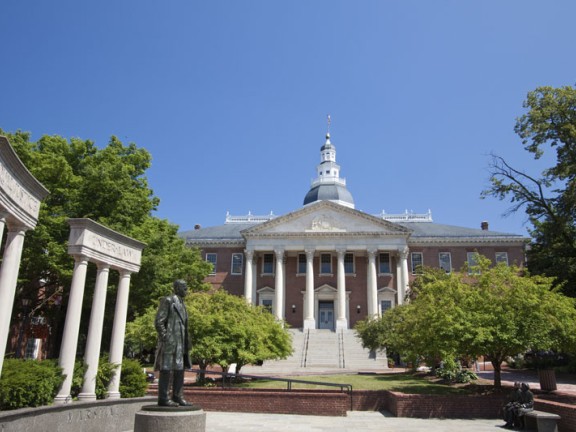Escaping the Deficit Trap

Governor-elect Larry Hogan didn't even have a chance to finish his thank-you tour before getting a nasty budget surprise: The state's deficit for the coming year has jumped from $400 million to $600 million, and it's on a course to hit $1 billion by 2020. To make matters worse, the state's job growth over the last year was one of the five lowest in the country. It's a tough time to take the helm.
The governor-elect is getting advice that slashing taxes will create jobs, but that didn't work for Kansas Gov. Sam Brownback. And after his anti-tax campaign, Mr. Hogan certainly can't raise taxes to plug the gap.
What he most needs is a plan to boost economic growth as federal spending in the state dwindles, falling by $1.2 billion last year. The federal government has gone from being an engine driving the region's economy to a brake slowing it down. For the foreseeable future, there's no prospect of more federal employees with bigger paychecks to spend or more contractors spinning off more jobs.Solving Maryland's budget picture depends on building jobs through stronger economic growth that shifts Maryland away from the unpredictable roller coaster of the federal budget and toward growing the high-growth, high-wage jobs that are most in demand.
Here the governor-elect has a strong hand to play. According to recent studies by the Census Bureau and the Brookings Institution, the region is second in the country in jobs that require STEM skills — science, technology, engineering and math — after San Jose. We're also the 13th tightest job market in the country, measured by how long it takes jobs to get filled. If we want to grow jobs, we can grow the STEM workers that employers most need.
The state already has the building blocks of the high-wage, high-growth pipeline in place, especially with the high-tech I-270 and I-95 corridors and the skilled grads produced by the state's higher education system. Strengthening the pipeline, especially for STEM workers, can fuel Maryland's economy and uncouple it from federal deficit politics. An economic summit in the new governor's first weeks in office could shape a strategy for connecting job creators with the universities supplying their future workers.
This is a long-term strategy and can't plug the short-term budget hole. But building that pipeline now could go a very long way toward shrinking the future state deficit — and growing Maryland's economy.
That leaves the near term. It will be tempting for Mr. Hogan to reach for the campaign pledge to cut $1.75 billion in waste, fraud and abuse from state government. There's undoubtedly wasteful government spending, but certainly not that much. And where problems exist, they're marbled into government's complex operations like fat in a steak, which can't be sliced away with a blunt knife without turning the steak into hamburger. No chief executive has ever found much budget-balancing money by waging war on waste.
More promising a path to ensure that government produces value for citizens is continued use of StateStat, a world-class program to improve the performance of government. Because the program has the previous administration's brand on it, it will be tempting to wipe it out. But even if Mr. Hogan doesn't use the name, he will need what it does: provide real-time evidence on what works in state government and what doesn't. He can change the sign on the door if he wants — but he needs to keep the best tool he has to improve the performance of government. It's saved 64,000 hours of waiting time at Department of Motor Vehicles offices, produced DNA matches that took 500 bad guys off the streets and brought infant mortality down 17 percent. It's one of the most important tools in the gubernatorial toolbox.
That leaves the short-term budget challenges, and there are nothing but tough choices. It will take a tap dance of revenue fixes, spending slices and skillful strategies to get through the coming budget.
But, most fundamentally, if Mr. Hogan is to succeed, he needs a long game. He can make real progress by investing in the state's future workers and launching the next stage of improving state government's performance. Without a long game, he'll be dealing with short-term budget patches for as long as he lives in Government House, and that won't be good for him or for Maryland.